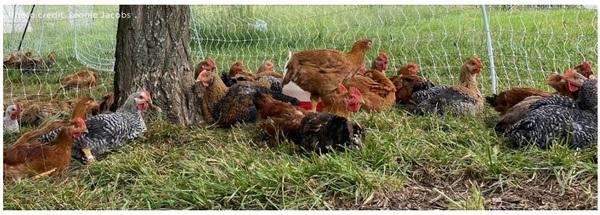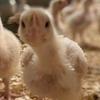Free-range poultry predators





- Keep birds inside (during certain times of the day)
- Keep birds constrained to a specific area using a fence or enclosed run with overhead cover
- Provide overhead cover for poultry on the range
- Owl/coyote decoys may work, but not for the long-term
- Remove debris for predators to hide/nest in near the coop
- Lock up/remove attractants such as feed, waste, and eggs
- Use a guard animal such as an alpaca, guard dog, donkey or even geese

McDermott, T. and Titchenell, M. 2018. Predators of Poultry. ohioline.osu.edu/factsheet/vme-22
Moyle, J. et al. 2020. Identifying and Preventing Poultry Predators in the Mid-Atlantic Region. https://extension.umd.edu/sites/default/files/publications/Poultry%20and%20Predators.pdf
Jacob, J. N.D. Predator management for small and backyard poultry flocks. https://poultry.extension.org/articles/poultry-management/predator-management-for-small-andbackyard-poultry-flocks/
Jacob, J. 2020. Webinar recording: Predator management for small and backyard flocks. https://connect.extension.org/event/managing-predators-with-a-small-or-backyard-poultry-flock
Jacobs, L. and Persia, ME. 2021. Maintaining the health of your backyard flock. https://www.youtube.com/watch?v=PMElWUIC8hw




Having trees near uncovered coops restricts the moveability of hawks in attempts to pick birds.


United States










